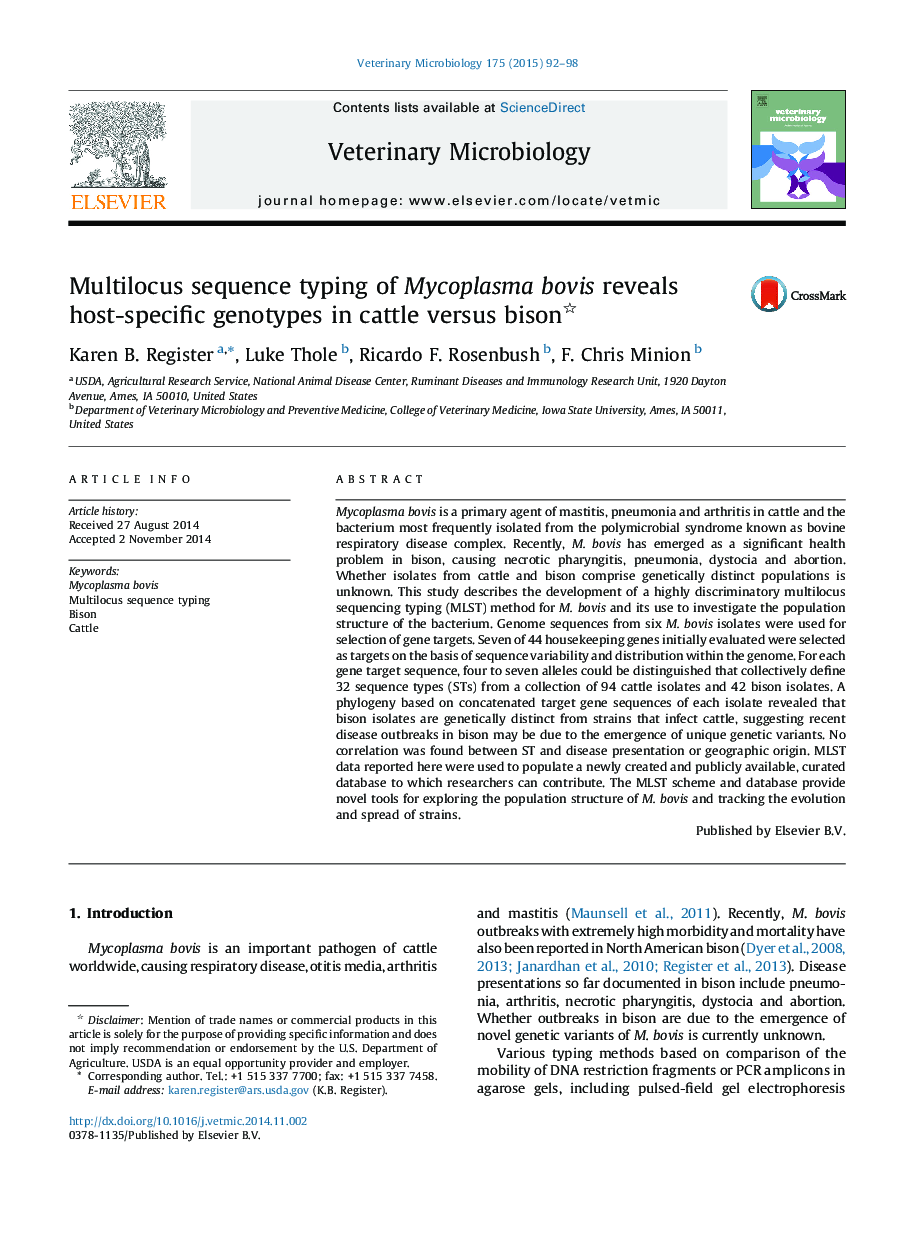| Article ID | Journal | Published Year | Pages | File Type |
|---|---|---|---|---|
| 2466566 | Veterinary Microbiology | 2015 | 7 Pages |
•We developed a multilocus sequencing typing (MLST) method for Mycoplasma bovis.•MLST sequence types found in bison isolates differ from those of cattle isolates.•A public, curated database for M. bovis MLST data was created.•The MSLT scheme and database provide novel epidemiological tools for M. bovis.
Mycoplasma bovis is a primary agent of mastitis, pneumonia and arthritis in cattle and the bacterium most frequently isolated from the polymicrobial syndrome known as bovine respiratory disease complex. Recently, M. bovis has emerged as a significant health problem in bison, causing necrotic pharyngitis, pneumonia, dystocia and abortion. Whether isolates from cattle and bison comprise genetically distinct populations is unknown. This study describes the development of a highly discriminatory multilocus sequencing typing (MLST) method for M. bovis and its use to investigate the population structure of the bacterium. Genome sequences from six M. bovis isolates were used for selection of gene targets. Seven of 44 housekeeping genes initially evaluated were selected as targets on the basis of sequence variability and distribution within the genome. For each gene target sequence, four to seven alleles could be distinguished that collectively define 32 sequence types (STs) from a collection of 94 cattle isolates and 42 bison isolates. A phylogeny based on concatenated target gene sequences of each isolate revealed that bison isolates are genetically distinct from strains that infect cattle, suggesting recent disease outbreaks in bison may be due to the emergence of unique genetic variants. No correlation was found between ST and disease presentation or geographic origin. MLST data reported here were used to populate a newly created and publicly available, curated database to which researchers can contribute. The MLST scheme and database provide novel tools for exploring the population structure of M. bovis and tracking the evolution and spread of strains.
